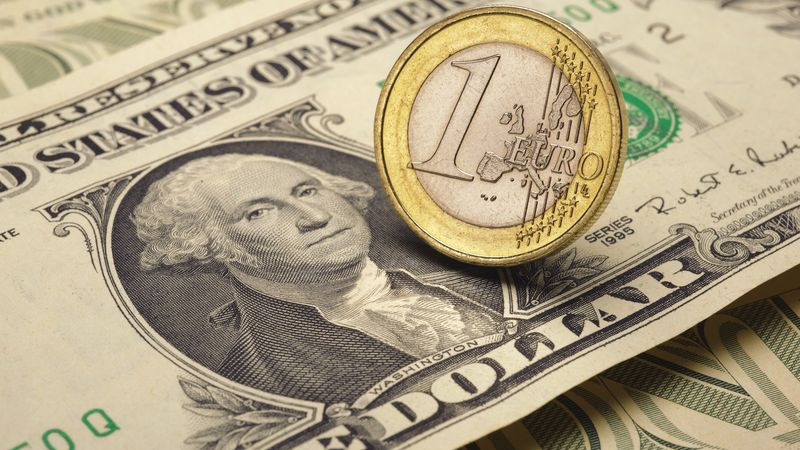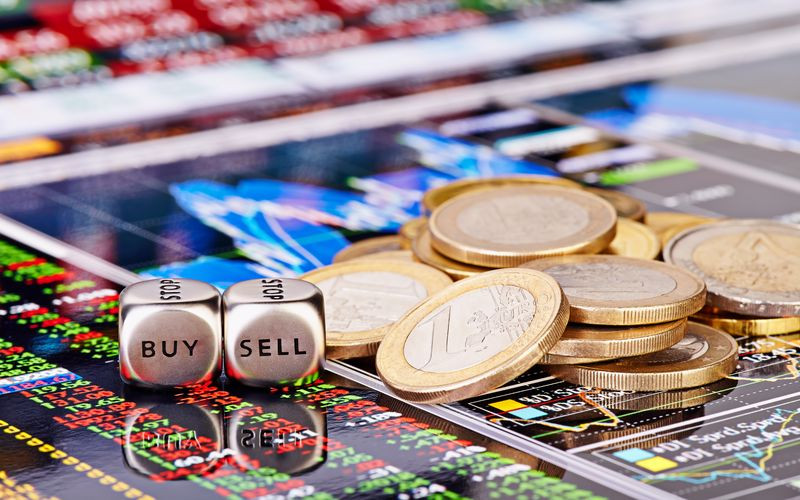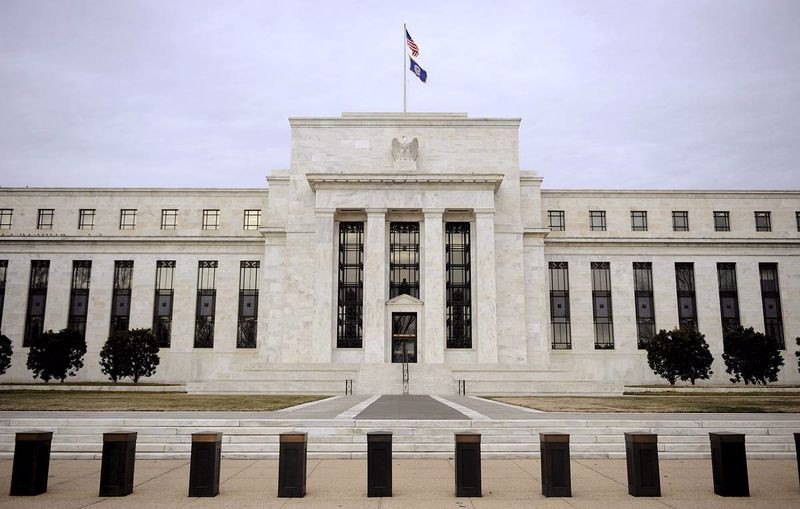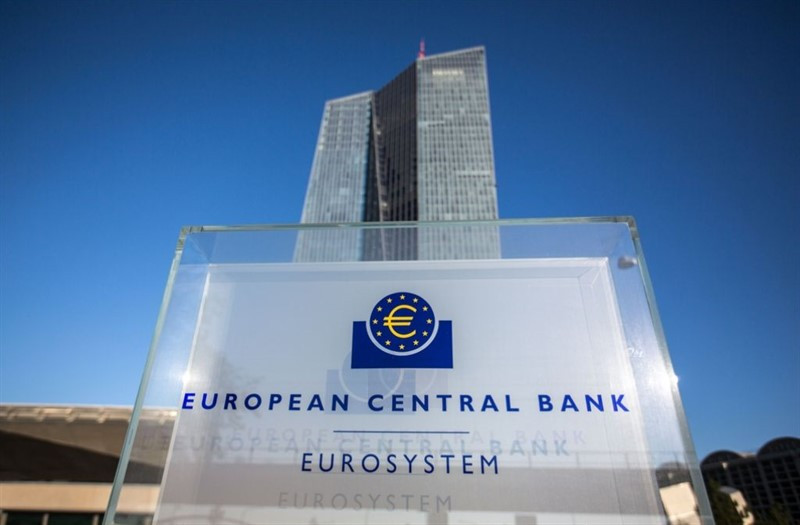Markets are gradually recovering from the shock caused by worsening geopolitical tensions.
The greenback stopped growing, reaching its high since June 2020 near 97.70 yesterday.
The euro is attempting to rebound from its lowest level since May 2020, seen at $1,1106 on Thursday.
Meanwhile, US stock futures are showing moderate intraday losses today, indicating cautious market sentiment.
Traders continue to monitor the situation in Eastern Europe, as well as assess further prospects for monetary policy in the US and the euro area.
Investors were fleeing to safe havens and this trend dominated financial markets yesterday.
As a result, the US dollar rose to multi-month highs before decreasing at the end of the US session.
The EUR/USD pair recouped almost half of its losses, falling earlier from the level of 1.1305, near which it closed on Wednesday.
Major US stock indicators have also removed short-term oversold conditions.
The main Wall Street indices turned to the upside by the end of the trading session on Thursday, offsetting the fall that reached 2.5-3% during the session, and finished yesterday's trading session with an increase of 0.3-3.3%.
As the West refrained from banning SWIFT and targeting the energy sector in the first package of sanctions against Russia, fears of a global economic slowdown eased, allowing the EUR/USD pair to recover.
However, experts warn that the situation is evolving, risking to trigger shocks in commodity and energy prices in the coming days. In such a case, the US dollar, as a protective asset, may show its potential, and the single currency may come under pressure again.
In addition, Washington and Brussels may impose additional sanctions on Moscow. If that happens, risk aversion will return to the markets before the weekend.
Moody's experts see the events around Ukraine as serious risks for the global economic outlook.
They estimate a 55% chance of a quick resolution of the conflict and see a 30% chance of its stalling while considering both scenarios.
Moody's reported that the GDP of the G20 countries would expand by 4.3% in 2022 and by 3.2% in 2023. If the conflict drags on, the rate of increase in the index by the end of this year will be below 1%, in the case of a quick end to the conflict - less than 3%.
ING strategists believe that the current situation remains favorable for the US dollar, as the world's attention is still focused on the war in Europe. The greenback has understandably gained an advantage this week and may retest the highest level since June 2020 at 97.70.
"We suspect investors will want to hold on tight to their dollars. Also helping the dollar seems to be the Federal Reserve story, where FOMC members still seem happy to speculate over a 25bp or 50bp rate hike at the 16 March meeting. Here, the pricing of the Fed terminal rate (in two years) is just 5bp off its recent highs. We continue to favor the dollar over Europe and favor the DXY returning to yesterday's spike high near 97.70," they noted.
President of the Federal Reserve Bank of Richmond Richard Barkin said on Thursday that Russia's invasion of a neighboring country is taking the global economy into uncharted territory, and the Fed needs to assess how that might affect its plans to raise its key interest rate next month.
"The logic for that is underlying demand is strong. The labor market is tight. And inflation has been high and broadening. We are going to have to see whether this Ukrainian situation changes that narrative. And I just think time will tell," he said.
He also added that the interaction between the US and Russian economies is not very significant, and an escalation of the conflict between Moscow and Kyiv would rather affect Europe.
Cleveland Federal Reserve President Loretta Mester noted the situation in Ukraine could influence the pace of the Fed's key interest rate hike in March, but not the timing of its increase.
Mester said that barring an "unexpected turn in the economy," she still supports kicking off a series of interest-rate hikes in March and continuing the hikes in the following months.
"The unfolding situation in Ukraine for the medium-run economic outlook in the US will also be a consideration in determining the appropriate pace at which to remove accommodation," Mester added.
While the money market now estimates the chance of an immediate 50 basis point March federal funds rate hike at 34% against 20% last week, some FOMC officials such as James Bullard and Michelle Bowman hinted that even if geopolitical tensions escalate, they may vote for a hawkish move.
Yesterday, Christopher Waller, a member of the Board of Governors of the Federal Reserve, joined them in calling for a one percentage point increase in the key rate by midyear. He suggested starting with a half a percentage point increase in March if statistics in the coming weeks continue to point to an "extremely hot" economy.
Waller would like to see the Fed's benchmark rate, now between zero and 0.25%, increased to a range of 1% to 1.25% by early summer.
Thus, apart from developments around Ukraine, the Fed's rate decision will ultimately depend on incoming data. We are talking about the February US inflation report, which will be released on March 10, as well as the NFP release, which will be published next Friday.
While some Fed officials said that heightened tensions in Eastern Europe are likely to slow but not stop interest rate hikes coming, several ECB policymakers, even those considered hawks, said that the situation in Ukraine could make the ECB slow its easing of stimulus measures.
Bank of Greece Governor Yannis Stournaras believes that the European Central Bank should continue to buy bonds at least until the end of the year to mitigate the effects of the conflict in Ukraine.
Governor of Austria's central bank Robert Holzmann said that the events in Ukraine could delay the ECB's withdrawal from stimulus measures.
Isabelle Schnabel, the ECB's board member, said that the "war shock" clouded the outlook for the economy just as inflation was picking up in the euro area and allowed the ECB to cancel its stimulus measures.
Having touched a multi-month low at 1.1106, the EUR/USD pair was able to rebound. Nevertheless, another drop to 1.1100 is possible, OCBC Bank analysts believe.
"Headlines will take over for this session, and the risk into next week is a further escalation over the weekend. Thus, the pair may not be out of the woods just yet, and a retest of 1.1100 cannot be ruled out. Further out, the question is whether this conflict will upend the ECB's and other central banks' playbook, and spark a more structural change in overall trajectory for the pair. We hold our horses for that for now," the analysts said.
After Russia launched a military special operation in Ukraine, it caused sharp fluctuations in the currency market. The EUR/USD pair showed one of the largest one-day declines in months, approaching the level of 1.1100. An additional drop towards 1.1000 is still possible shortly, MUFG economists believe.
The experts of Bloomberg Economics offered 3 scenarios and evaluated the impact of the Russian-Ukrainian conflict on economic growth and monetary policy on both sides of the Atlantic.
In the best-case scenario, a quick cessation of hostilities prevents further inflation spiral in the commodity market, supports the recovery of the US and European economies, as a result of which the Fed and the ECB will have to make adjustments to their plans, rather than abandon them.
A slightly more negative scenario is a prolonged conflict, causing tougher Western sanctions against Russia and disruption of oil and gas exports, which means an even bigger shock to the energy sector and a serious blow to the global market. This will rule out the ECB rate hike this year and slow down monetary policy tightening by the Fed.
Finally, in the worst-case scenario, everyone will suffer: both Russia because of Western sanctions, and Europe, which will not wait for gas supplies, provoking a recession in Europe, while in the United States financial conditions will become much tougher, economic growth in the country will slow down, and the Fed will have to wait with a hawkish policy, which will take a markedly more dovish sentiment.
On Friday, the US currency is trading almost 0.9% below the multi-month highs reached yesterday at 97.70. Nevertheless, the greenback continues to be in demand amid continued uncertainty around Ukraine, leaving the EUR/USD pair under pressure.
Societe Generale strategists expect the pair to incur additional losses if it breaks through 1.1120.
"A bounce is not ruled out, however, a descending trend line at 1.1330 - 1.1345 could cap. Crossing this would be essential for a retest of 1.1485. In the event 1.1120 gets violated, there would be a risk of next leg of downtrend towards projections of 1.1080 - 1.1040," they said.
























